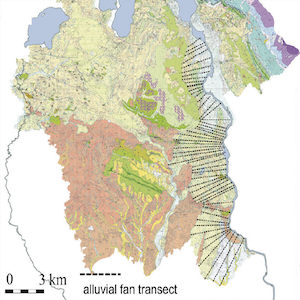Improved groundwater modeling by incorporating geological information from hydrogeological sections

All claims expressed in this article are solely those of the authors and do not necessarily represent those of their affiliated organizations, or those of the publisher, the editors and the reviewers. Any product that may be evaluated in this article or claim that may be made by its manufacturer is not guaranteed or endorsed by the publisher.
Authors
Geological cross-sections are usually employed in the hydrogeological model conceptualization, but their usage may not be easily exploited in subsequent modeling phases. The spatial distribution of geological facies along a geological section’s track may significantly vary when using random facies fields, and these may not be faithful to the original conceptualization described by the geological section. The present work offers a novel framework for improving available hydrogeological models using geological sections as a more quantitative source of information, hence by taking into account of information coming from a geological section. Then, this information given by the change in the distribution of porosities is transferred from the section’s track to surrounding locations through a proper kriging procedure upon a chosen Correlation Scale (R), which is exponentially correlated in space. This procedure is tested by using porosity distributions upon several R, associating a conductivity value with each porosity one through empirical formulations, and informing several numerical models related to a real case study (an aquifer in the province of Lecco, Northern Italy). The proposed procedure enables to significantly outperform the former calibrated numerical model. Best-calibrated models show that the convenient R could be from 2 to 5 kilometers long, consistent with the width of the alluvial and fluvioglacial floodplain that characterizes the aquifer under examination.
How to Cite

This work is licensed under a Creative Commons Attribution-NonCommercial 4.0 International License.
PAGEPress has chosen to apply the Creative Commons Attribution NonCommercial 4.0 International License (CC BY-NC 4.0) to all manuscripts to be published.














